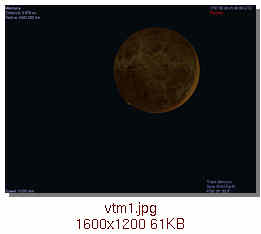On May 28, 1737, John Bevis observed portions of the passage of Venus in front of Mercury from Greenwitch Observatory.
Here's Celestia's image of that event, as if viewed from the location of Greenwitch. A small part of Mercury can be seen past the lower left edge of Venus.
 (this is a link to a high resolution image.)
(this is a link to a high resolution image.)
A puzzle for the viewer: what is wrong with Celestia's presentation of this event?
Hint: similar problems are present, although not quite so obvious, in the other images of transits that I've posted today.
(No, it's not that I left off the cloud layer of Venus. That's an artistic decision.)
